Who could forget the 2010s—the era of stripped-down logos and ultra-minimalist designs?
Less is more was the mantra of almost every brand—from tech heavyweights Apple and Microsoft to luxury brands Balmain and Burberry.
But more than a decade later, this ‘bare look’ has lost its appeal. The modern consumer now demands more color, character, and creativity from brands and their comms.
What caused this fall from grace (and the rise of a new craze)?
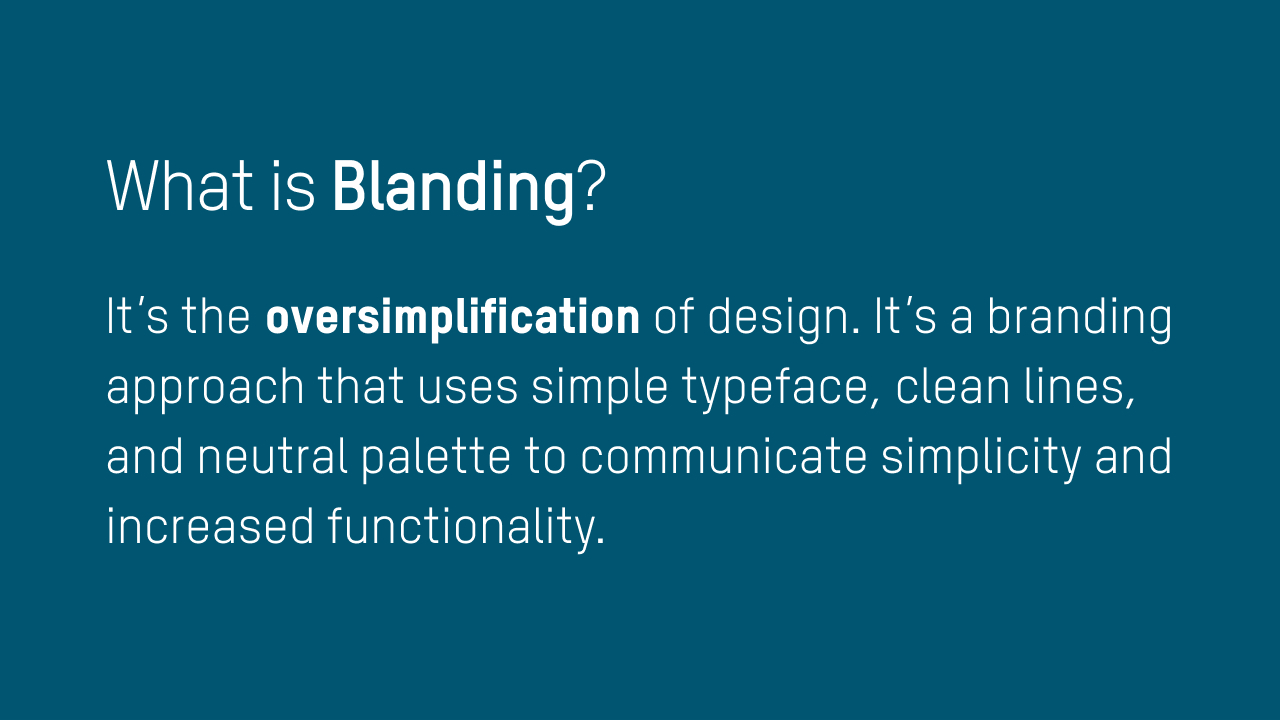
Pitfalls of Blanding
Remember blanding in its heyday? Back when brands believed that monochromatic palettes, elegant typefaces, and straightforward designs were the way to consumers’ hearts?
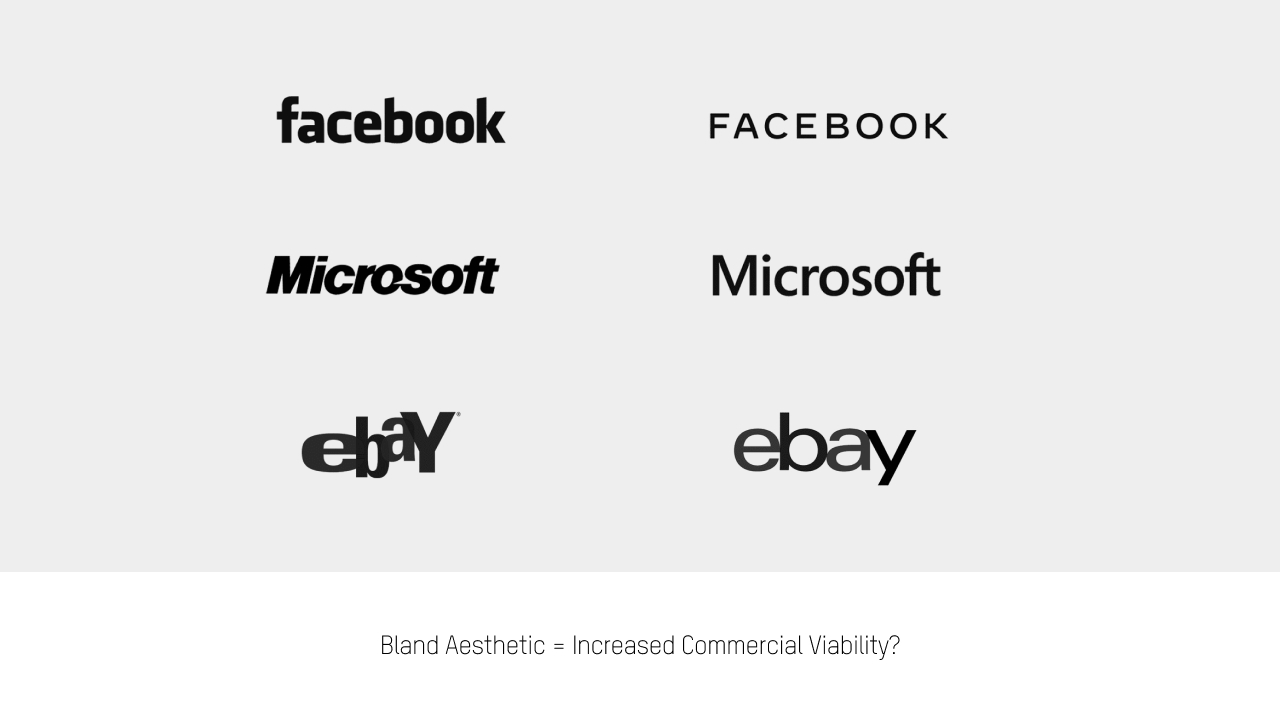
Everyone was sold on the idea that blanding increased their commercial viability. And the degree of simplification blanding offered made designs and experiences more intuitive, utilitarian, and user-friendly (Campaign).
Furthermore, flat designs made brands look modern, clean, and professional—fit for modern times. But while it did add to their credibility, it made them look ordinary…unoriginal, even. There was nothing to set them apart from one another.
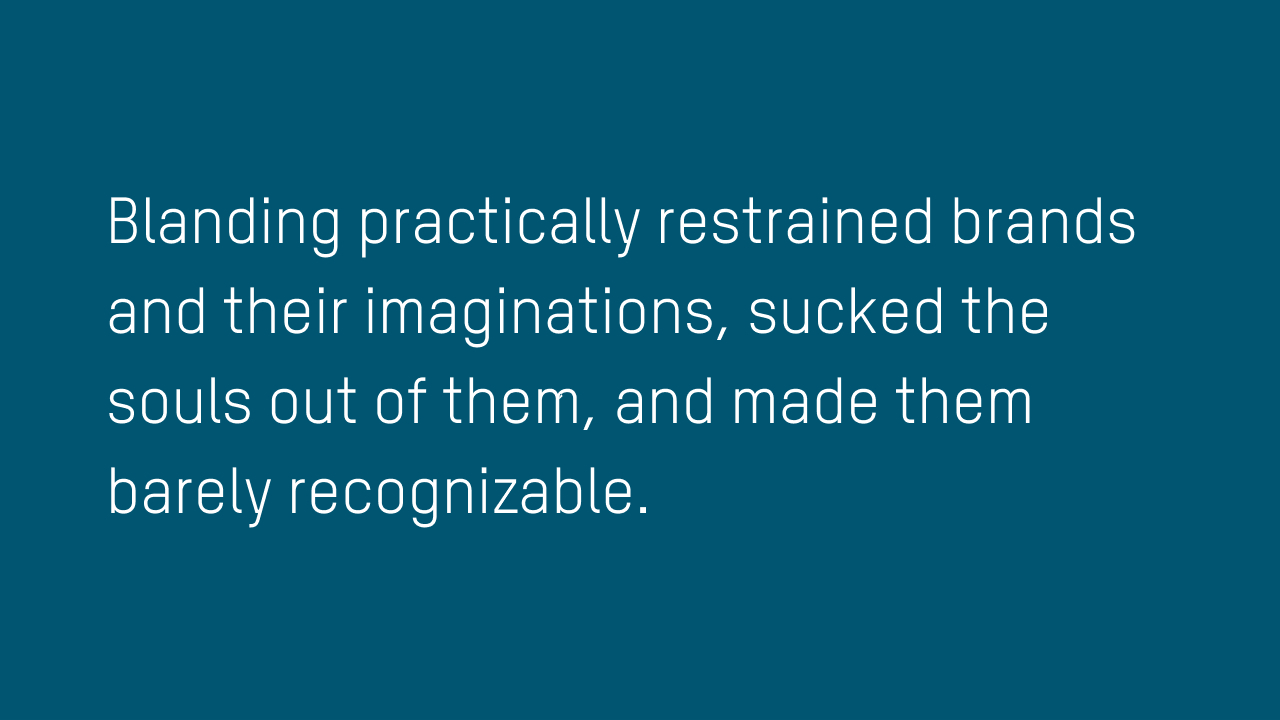
At some point, big and small brands alike practically looked the same. Blanding restrained them and their imaginations, sucked the souls out of them, and made them barely recognizable (Canvas8).
Everyone became so obsessed with achieving the ‘clean’ aesthetic that they lost one critical component—their identities. Brands eventually realized blanding was no longer effective in capturing the hearts of younger consumers.
The Rise of New Era
The digital buying market in the United States is dominated by Millennials (37%), with Gen Zers (18%) trailing closely (eMarketer). Combined, they have the largest purchasing power of all age groups.
Tech-savvy, self-expressive, and highly ‘woke,’ they’re the new age of consumers and they play a pivotal role in shaping the world of digital. That’s why brands listen to what they want—especially when it comes to their aesthetic tastes.
Unlike their predecessors who prefer safe, simple, and sophisticated designs, the younger consumers, particularly the Gen Zers, crave designs that are raw, real, and even jarring. They appreciate bold colors, textures, and patterns—from brands’ digital comms down to their own interior designs.
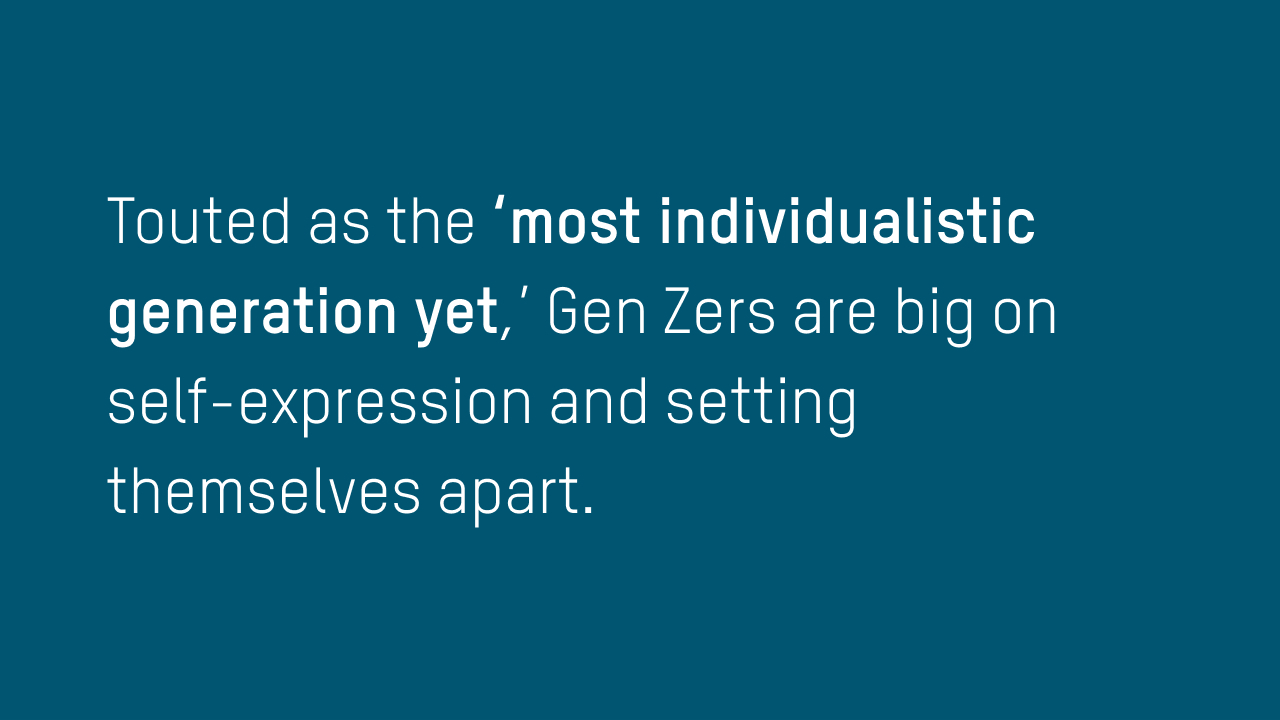
Touted as the ‘most individualistic generation yet,’ Gen Zers are big on self-expression and setting themselves apart (Contagious). Around 77% have said they don’t like sticking to standards and ‘being put in a box.’
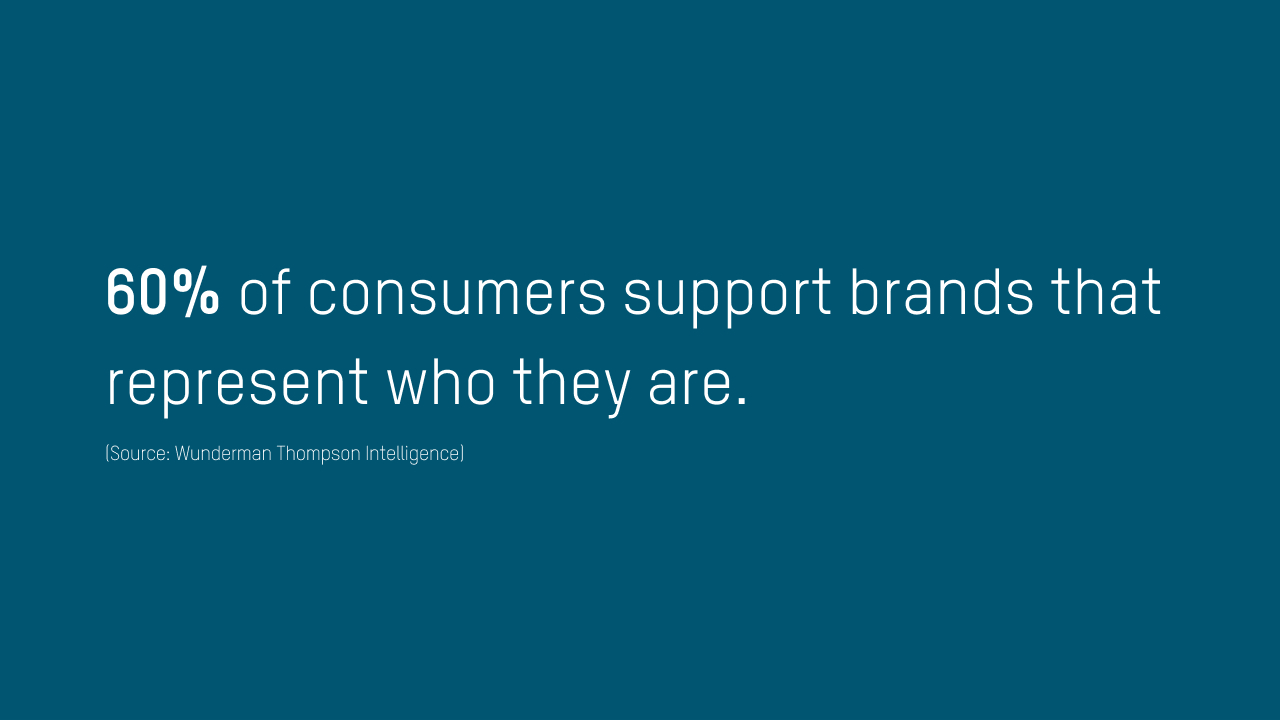
A majority of this generation (60%) support brands that are an expression of who they are. (Wunderman Thompson). To Gen Zers, maximalism offers the freedom to break free from norms, embrace their individuality, and showcase their identity—which blanding restrained them from doing.
Maximalism in Full Swing
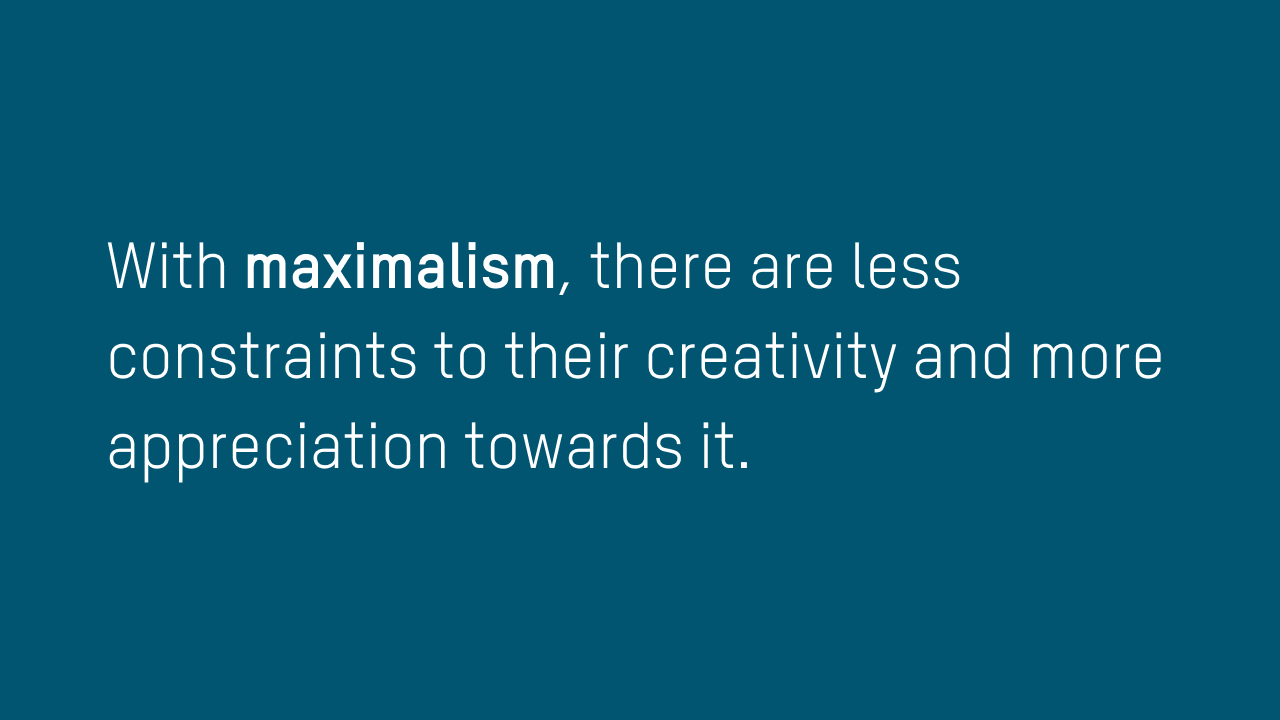
Today, brands are being celebrated for being ‘extra.’ There’s a level of boldness in their creative explorations—with their art, music, or design—since the start of the 2020s.
And since there are less creative constraints, brands are emboldened to be more out-there when it comes to expressing themselves and are moving away from looking too basic.
This is why we’re seeing more maximalist executions from brands in the world of digital. Designs with sharp contrasts, irregular shapes, and neon colors are becoming more prevalent (Canvas8).
This move towards maximalism is making brands’ marketing comms more unique, memorable, and relatable to their audiences. Aside from maximalism, we’re also seeing more retro-themed packaging designs and marketing illustrations—filled with curves, colors, and old-school glamor.
Indeed, achieving a level of distinctiveness is becoming a critical component in branding as it’s deemed essential for association and driving preference, which is more challenging to achieve with blanding.
But more than looking different, the reason why maximalism design is a hit to today’s consumers is that it delivers their own trademark of fun—something they will be perpetually known for.



